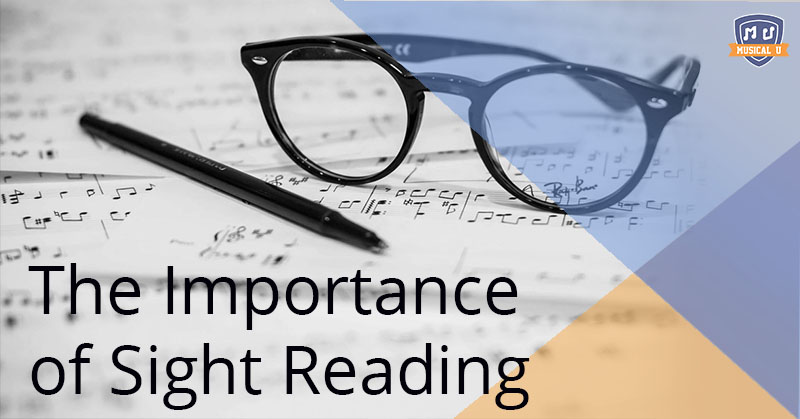Remember back when reading was the ultimate skill to show off? Your school teachers gave you the alphabet and unlocked a secret world you could navigate and understand. Now it’s hard to imagine a time when you couldn’t read street signs and non-picture books.
Music, like any written language, can give you that same limitless power you felt as a 5-year-old first entering a world filled with words. The key to this hidden realm within music is sight reading.
What is Sight Reading?
A musician who can sight read has the ability to play any score of music regardless of familiarity with the piece. Having a fine-tuned understanding of musical notation, theory, and structure is essential to being a capable sight reader and well-rounded musician.
Like learning to read in school, musical sight reading abilities start from the basics and then build on each other as you move further along in your practise. For many musicians, sight reading is a skill that develops slowly and quietly alongside general proficiency. The constant practising, studying, and challenges that make up a music-learning experience are the perfect ingredients for sight reading success. You can accelerate this journey using special sight reading exercises.
Endless Possibilities
Not only does sight reading make you look and sound really cool, it is also immensely beneficial to your musical journey. Truly understanding how music works in all its forms gives you unlimited potential to continue pushing boundaries and developing musically.
Can you imagine being able to play any piece of music regardless of style, key, or melodic structure? Opportunities to explore all areas of music are within your reach when you hone your sight reading skills.
Be a Better Performer
There’s nothing more inspiring than watching a talented musician perform a piece they know backwards, upside down, and inside out. What if you could do this even with a piece of music you’d never played before? The breadth of knowledge necessary for sight reading makes this kind of expert performance possible with any and every piece you encounter.
Some people think that sight reading is almost the opposite of playing by ear. However, understanding music on the intimate level required for high-level sight reading can actually make improvisation and playing by ear feel like second nature, which makes you more impressive to watch and a better musician all-around.
Never Stop Learning
For lifetime learners, having new areas to explore within music is fundamental to maintaining a positive and growing musical relationship. Without a challenge, learning can become dull, which makes it easy for you to lose focus on your goals. The ability to pick up any score and know how to play it keeps the process exciting and your musical goals bright ahead of you.
Each era and every new generation of composers has something fresh to bring to the table. This can seem intimidating for musicians who haven’t branched outside of their comfort zones to learn to sight read. Becoming a capable sight reader helps expand your realm of comfort so that nothing can stop you from giving a new piece a try.
The language of music is full of mysteries, and sight reading can be your all-access pass!
What’s your experience with sight reading?
Be sure to share your tips, tricks, and stories in the comments!







